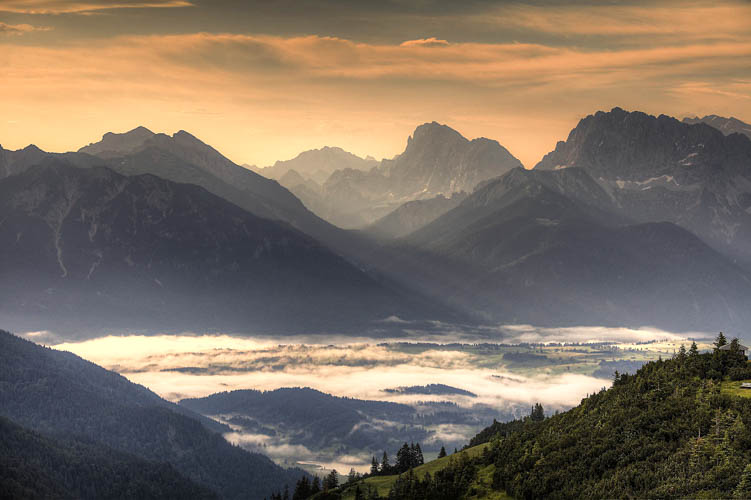With a little training and acclimatisation any fit hiker can climb their first 4,000m peak in the Alps. Mountain guide Charlie Boscoe reveals how you can do it.
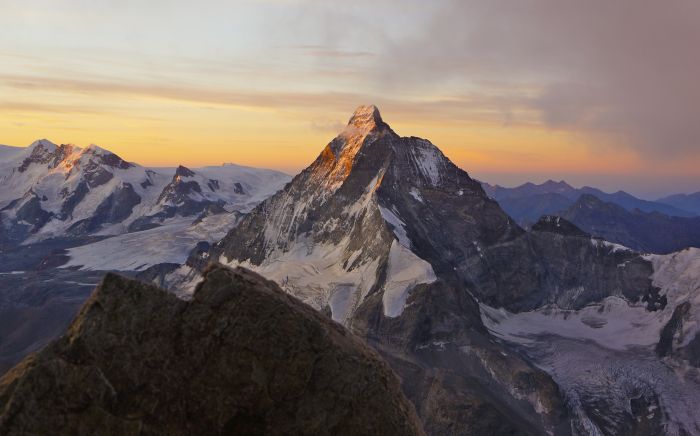 Photo: Peter Riley
Photo: Peter Riley
Mountaineering in the Alps can seem pretty daunting to even the most experienced and fit hill walker but it really needn’t be. Remote summits, bad weather and navigation issues were pretty intimidating to all of us when we started going into the hills but it’s amazing how quickly you gain a bit of confidence and your perception changes. The reality of climbing your first 4,000m peak is no different to any other adventurous goal – it’s closer than you might think if you just do a bit of training and build up to it. Here’s my guide to getting on top of that dream alpine peak.
Perception
It can be scary to think about climbing your first 4,000m peak but just remember that a 4,000er is only a minor geological accident bigger than a 3,900er! Try not to focus too much on the endeavour as a whole; instead think about each individual section and what will be required of you during it. The walk up to the hut should be easy enough. The pre-dawn start is tough but allows you to not have to think much for the first few hours, and the final hour or two to the summit just demands that you dig deep and keep plodding. Think only about what is coming up in the next hour and you should always feel like you can manage the challenge. Just remember that the tougher it feels, the better that beer will taste when you get back to the valley!
Preparation
As with most sports, the best preparation for mountaineering is to go out and do it. This isn’t always too easy though, especially if you don’t live in the mountains, so try and tailor your training towards your goal. If you run, cycle or walk regularly, add in a bit more uphill and try and do some lower body strength training too. As far as skills go, you can learn virtually all of the technical skills you’ll need in the acclimatisation period (see below) leading up to your big day. Your guide will assess what skills you need and teach you whatever is missing. But the less you need to learn, the more you can enjoy the mountaineering, so try and get some experience walking in crampons, using an ice axe and putting on a harness before you go.
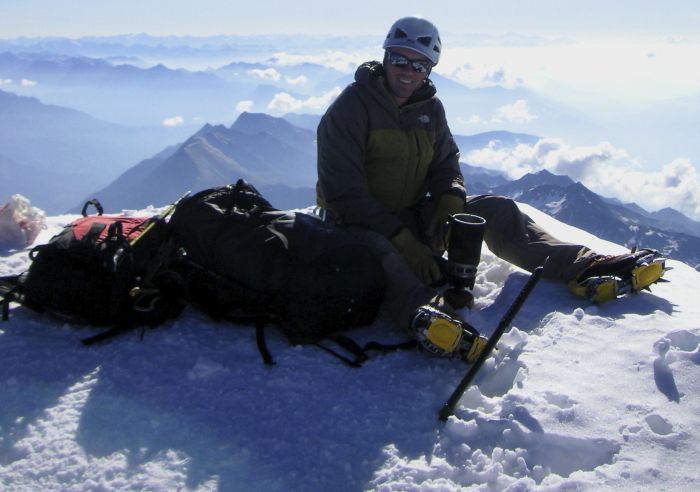 Photo: Owen O’Keefe
Photo: Owen O’Keefe
Acclimatisation
While you can just about climb a first 4,000m peak with no acclimatisation, it won’t be much fun if you do! A much better idea is to spend a few days before your climb ascending higher and higher peaks to get your body used to the thin air of the high alpine peaks. The weather is unfortunately not guaranteed to be good but the mountain guides of the Alps know all the secret spots and will almost certainly be able to find a peak or two for you to climb before the big day. As well as improving your chances of summiting your first 4,000m peak, the acclimatisation period also means that you should learn plenty of skills, see some different mountains and enjoy your eventual summit even more.
Kit
The good news is that if you hill walk in Britain, you will probably have much of the kit you need to climb your first 4,000km peak. If you have a rucksack (minimum 35 litres), decent waterproofs and a down jacket, then all you need to get your hands on are mountaineering boots (B2 or B3), crampons, a harness and an ice axe. All of these items are available to hire in any major alpine town and your guide will be able to help you out with this.
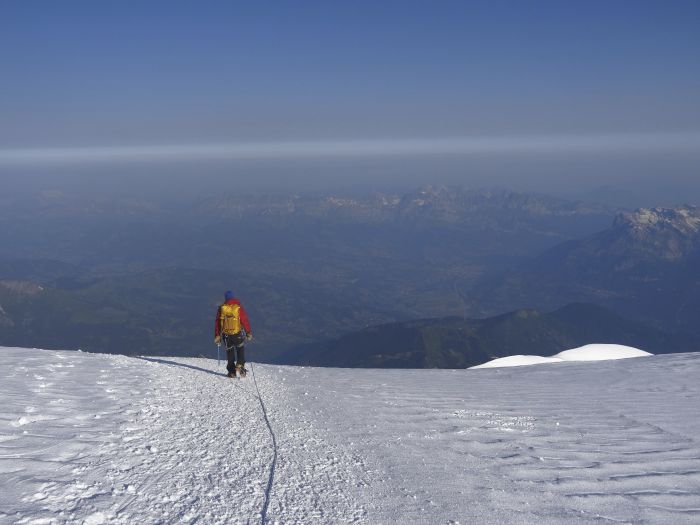
Ideas for a first 4,000m peak
As with any challenge, the key with climbing the first 4,000m peak is to pick the right objective. The Matterhorn is the prettiest and Mont Blanc is the biggest but they aren’t the peaks you want to be aiming for. I think that there are three 4000ers ideally suited to the novice alpinist:
● Allalinhorn (4,027m). Although it only just scrapes into the 4,000er category, this is a wonderful peak with stunning views across the Zermatt and Saas Fee massifs. Best of all, the mountaineering is non-technical and you can take a cable car to 500m below the summit.
● Gran Paradiso (4,061m). Gran Paradiso is famous for being the highest mountain completely in Italy, but less well known is that it has some of the friendliest and comfiest mountain huts in the Alps. A few hours of walking gets you to the hut and then a huge Italian feast fuels you up in preparation for summit day – my sort of mountaineering.
● Breithorn (4,164m). The Breithorn may be the highest of the summits listed here but the fact that the Klein Matterhorn cable car takes you to over 3,800m actually makes this the easiest of the three. It’s still a tough challenge, but the unrivalled view of the Matterhorn more than makes up for the effort.
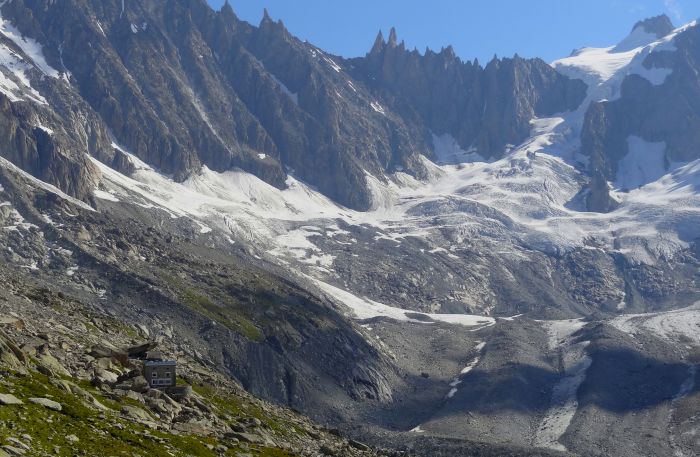
Uncertainty
One of the great things about mountaineering in the Alps is that you just never know what’s going to happen. Don’t worry about whether you make it to the top of your first 4,000m peak, because whether you do or not, you’ll learn a huge amount from just trying. I’m sure that we all remember an adventure that didn’t go to plan but that’s how you learn and do a better job next time. If you don’t quite make the summit, don’t lose heart! The mountains will be there next year and you’ll be much better prepared to tackle them with a bit of experience under your belt.
Addiction
So there we have it – a bit of honing skills and fitness and before you know it you could be sitting on top of an alpine giant, staring at a lifetime of future adventures. One word of warning though; 4,000ers are addictive and there are 82 to tick off! Better get started.
Who’s writing?
Charlie Boscoe lives in Chamonix, in the heart of the French Alps, and runs a guiding company called Mountain World, offering bespoke guiding for all mountain activities across the Alps. He has led expeditions to the Himalayas, the Andes and the Atlas Mountains but is never happier than when out climbing or skiing in the mountains above his house.
Intro photo: Khun Hans



